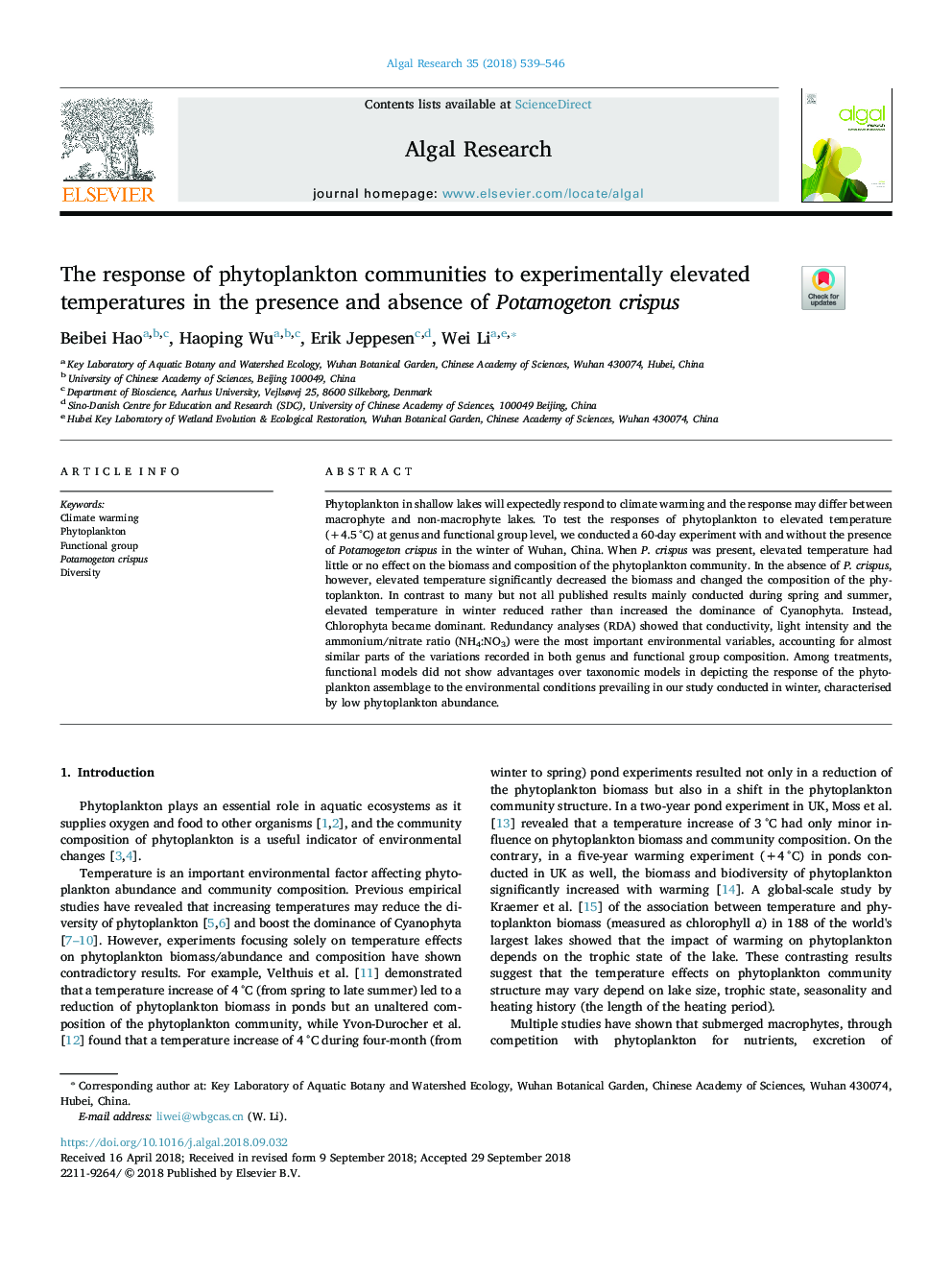| Article ID | Journal | Published Year | Pages | File Type |
|---|---|---|---|---|
| 11032755 | Algal Research | 2018 | 8 Pages |
Abstract
Phytoplankton in shallow lakes will expectedly respond to climate warming and the response may differ between macrophyte and non-macrophyte lakes. To test the responses of phytoplankton to elevated temperature (+4.5â¯Â°C) at genus and functional group level, we conducted a 60-day experiment with and without the presence of Potamogeton crispus in the winter of Wuhan, China. When P. crispus was present, elevated temperature had little or no effect on the biomass and composition of the phytoplankton community. In the absence of P. crispus, however, elevated temperature significantly decreased the biomass and changed the composition of the phytoplankton. In contrast to many but not all published results mainly conducted during spring and summer, elevated temperature in winter reduced rather than increased the dominance of Cyanophyta. Instead, Chlorophyta became dominant. Redundancy analyses (RDA) showed that conductivity, light intensity and the ammonium/nitrate ratio (NH4:NO3) were the most important environmental variables, accounting for almost similar parts of the variations recorded in both genus and functional group composition. Among treatments, functional models did not show advantages over taxonomic models in depicting the response of the phytoplankton assemblage to the environmental conditions prevailing in our study conducted in winter, characterised by low phytoplankton abundance.
Related Topics
Physical Sciences and Engineering
Energy
Renewable Energy, Sustainability and the Environment
Authors
Beibei Hao, Haoping Wu, Erik Jeppesen, Wei Li,
